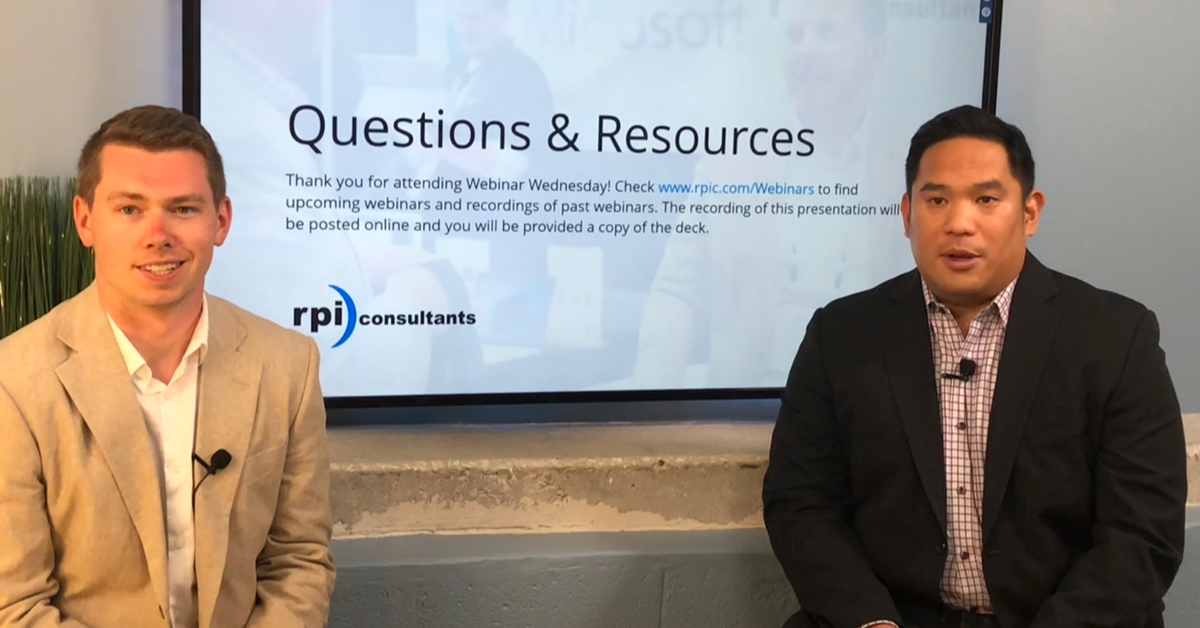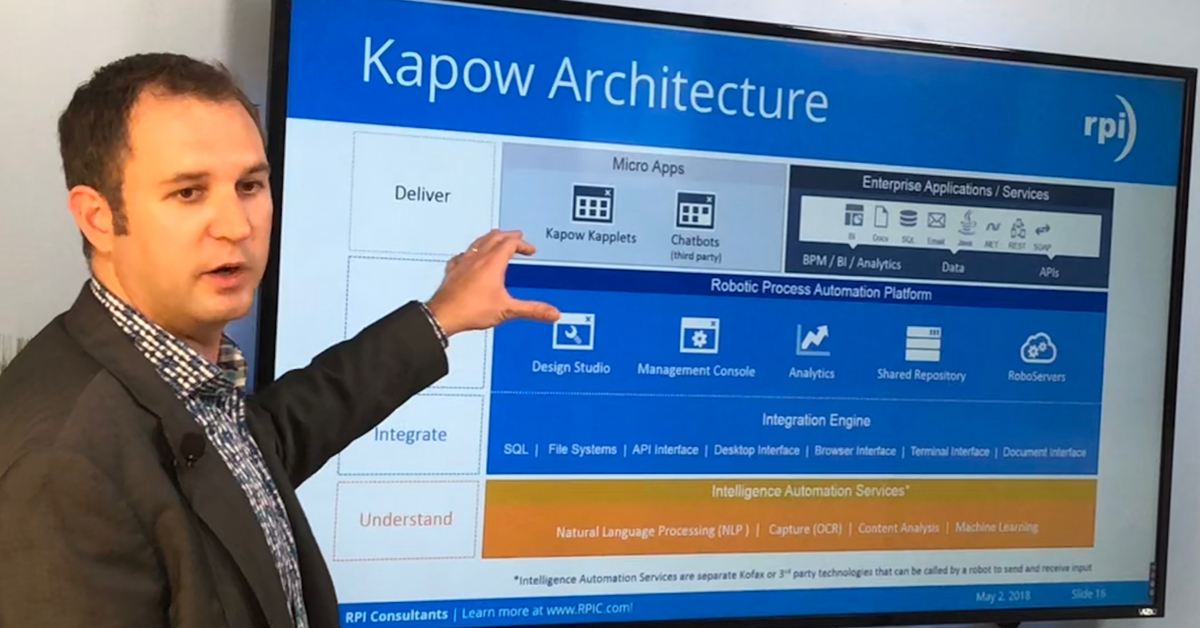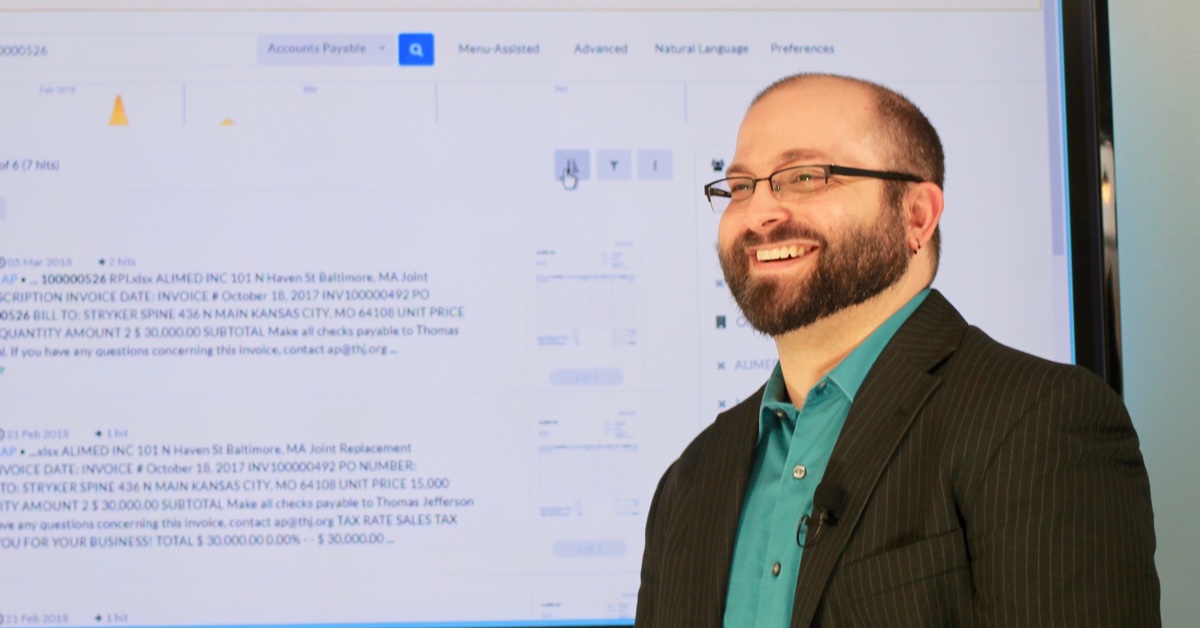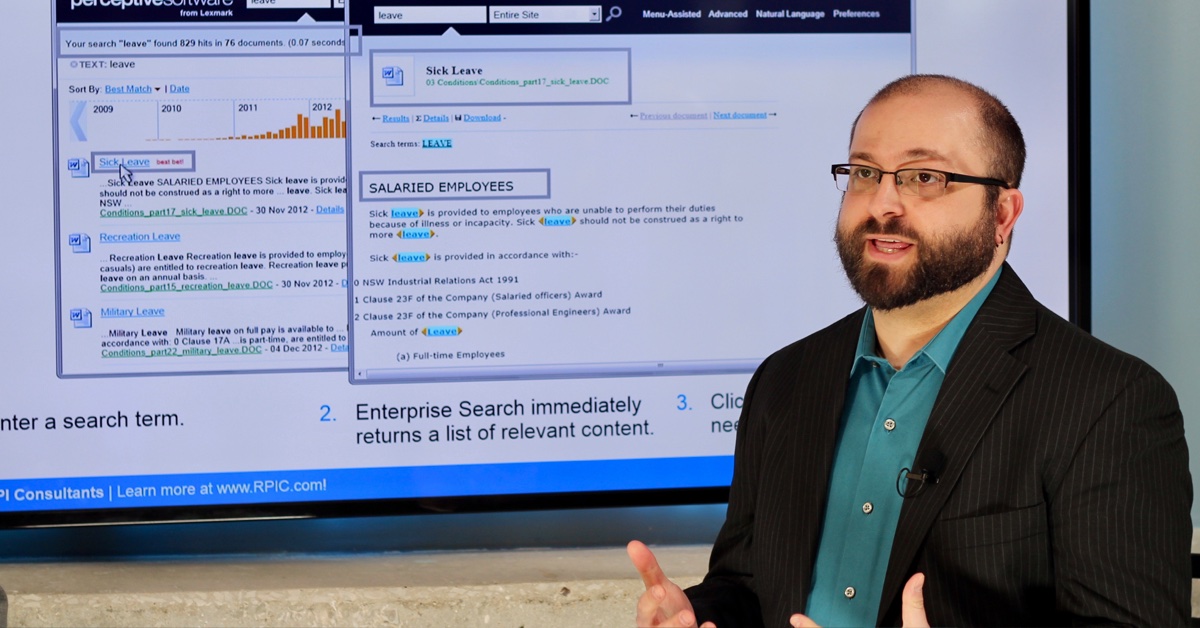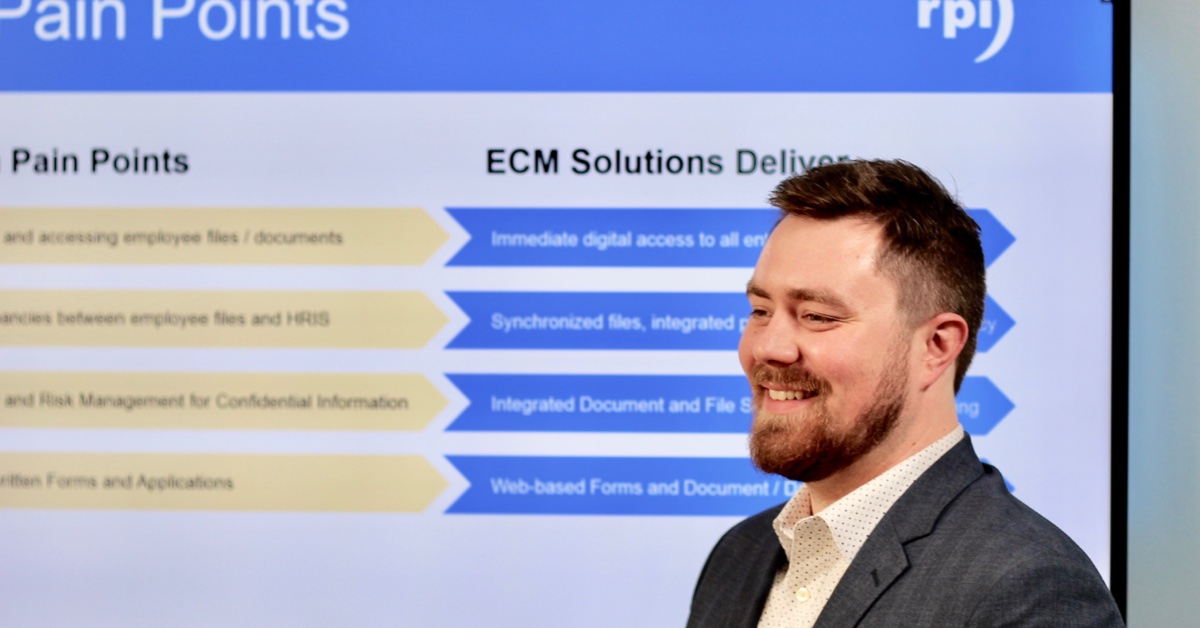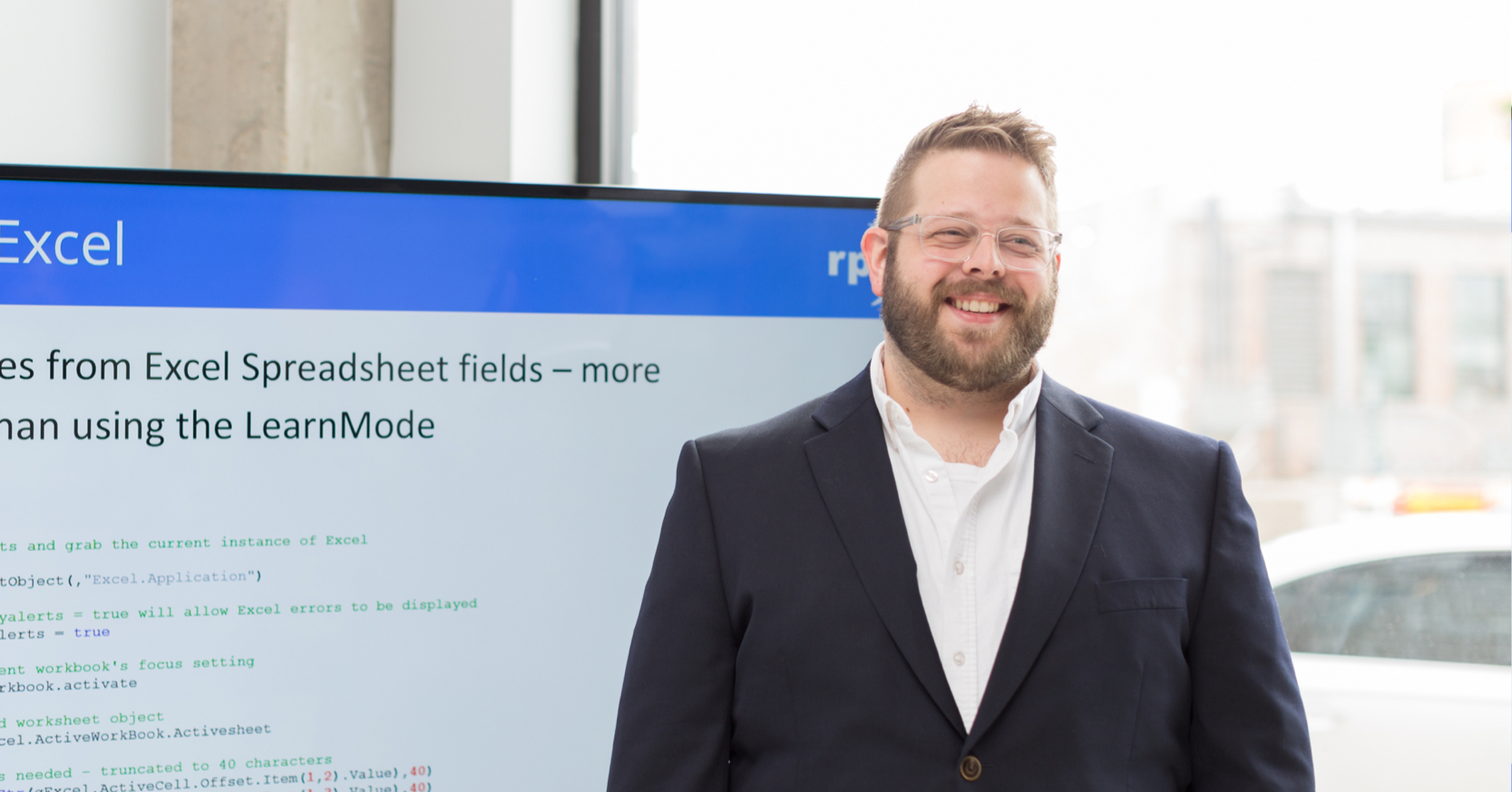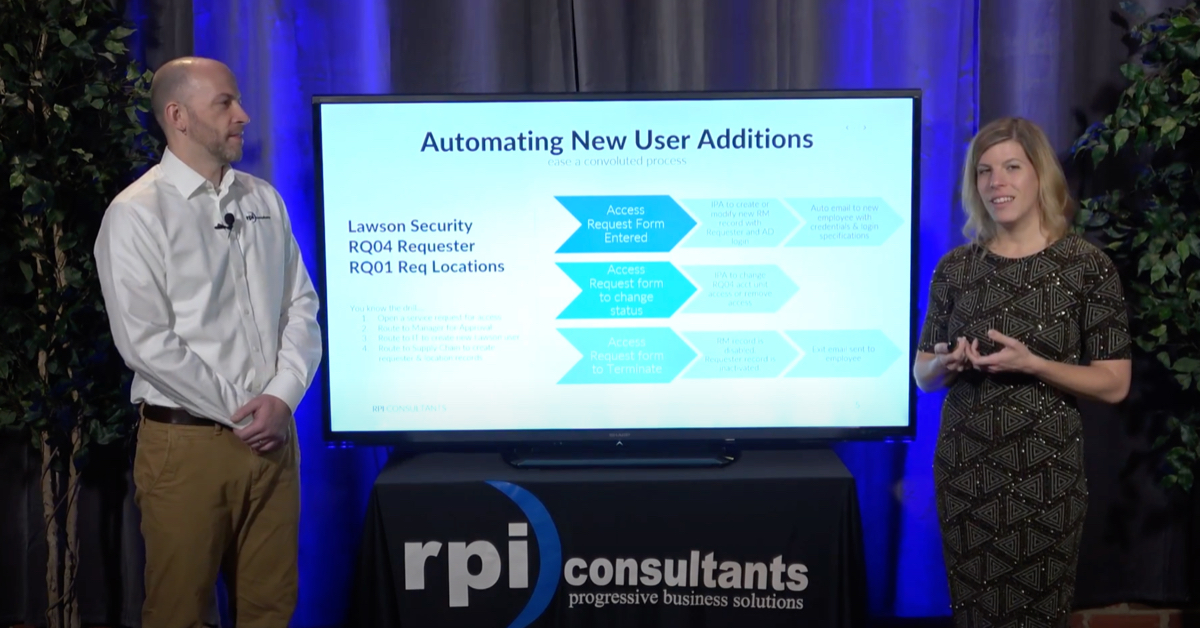Michael Hopkins:
Thanks everyone for joining us today. The webinar or the conversation that we’re going to be having over the next hour or so is What’s the Future of Enterprise Content Management? As we dig into that, I think we’re going to cover a lot of great topics that I think you’ll find interesting. But as we go, I wanted to encourage anybody on the line, if you have questions, to go ahead and submit them into the chat panel or now because we’re using Zoom, we have chat and Q and A. So if you have a question, go ahead and drop that in the Q and A. If you want to display your question to the entire group, feel free to put that into chat. And we look forward to getting some feedback from everyone on the line because this is obviously a very large topic and an important one to most of us. A couple other notes in terms of housekeeping, this presentation will be recorded. We will be posting it online for you to be able to take a look at later, share with your colleagues, share with your friends, because this is so exciting.
Michael Hopkins:
My name is Michael Hopkins. Unfortunately Patrick Wise came down with a case of COVID so he’s not going to be able to join us today. So you’re stuck with me. A little bit about my background. I’m currently a Manager for Sales and Marketing for RPI Consultants in the Content and Process Automation Practice. Before that, I spent about five years as a Perceptive Content Solution Architect with Perceptive Software at the time and then Lexmark, and of course eventually Hyland. My specialization and my team focused on HIM medical records, patient finance, patient [inaudible 00:01:36]. So that’s kind of my background. And a few years ago, I moved to the dark side of sales and marketing. A quick personal note, very excited about this weekend. I’m out of our Kansas City office, season ticket holder for the Chiefs so we’re hoping for a big game this weekend.
Michael Hopkins:
All right. So in terms of the agenda, what we’re going to talk about, kind of how we’re going to phrase this conversation. We’re going to take a little bit of a trip through history. We’re going to look at kind of where ECM came from and how it became so ubiquitous in our organizations, especially for large organizations. We’re also going to take a look kind of at the timeline in the arc of business applications and how those evolved alongside of ECM and kind of use those two ideas to figure out kind of what the competitive landscape for enterprise technology looks like today and into the future. And all of that is going to set the context for the question, what really is the future of enterprise content management or enterprise content services for all of us?
Michael Hopkins:
Before we get started, just a couple of disclaimers and disclosures. RPI consultants is an Infor Alliance Partner. So we’re an installation services provider for Infor, formerly Lawson. We are CloudSuite Specialized. I know CloudSuite as a name is going away, so I guess we’re just an Infor Alliance partner. We’re also a proud Kofax Platinum Partner. We offer professional services around Kofax Capture, Transformation, TotalAgility, RPA, and ReadSoft Online and ReadSoft Process Director. I recognize Hyland Solution Provider. However, we do have some of the most experienced consultants in the industry for Perceptive Content, OnBase And especially Brainware. New to our lineup, we just recently signed up. We are currently now a partner with KnowledgeLake which is a really great ECM solution provider that sits on top of SharePoint and you can join us next month on our webinars for more about that.
Michael Hopkins:
And RPI consultants is also the makers of Yoga Flexible Software, which is a set of proprietary tools, widgets, and software that helps you bridge the gap between your enterprise content and our enterprise systems.
Michael Hopkins:
All right, so all fine print out of the way and into the story here. So the Origins and Ubiquity of Enterprise Content Management. To really understand where ECM came from, we wanted to go back in time a little bit. So it’s 1995, things that are happening in and around the world. The Ford Taurus is the best-selling Sedan, I still love Ford Taurus’s, but that’s what was happening at the time. Steve Young was leading San Francisco 49ers to a Super Bowl when that weekend, exactly in 1995. Trends and technology, Zip Drives were the biggest thing, right? You’d be able to save a hundred megabytes on a Zip Drive which was pretty cool. Fun note, Microsoft Windows 95 was launched and you could buy it, but it didn’t even include Internet Explorer at the time. That’s how new the internet was even though we had a bunch of internet companies that really were starting to take off, including Amazon, eBay, Craigslist Match.com, et cetera. Those were the days, huh?
Michael Hopkins:
In terms of what was else, was happening kind of in and around the technology world, computing and data really started to become a service. We were living in a world where most computing was kind of personal computing and it was more hobby and more fringe. But as some of these technologies became a little bit more affordable, became a little bit more utilizable, businesses started to see the opportunity to be able to reduce costs, improve efficiency by actually being able to house data and information in these systems and make them more accessible. So they started investing in things like servers and started investing in things like internets and eventually connecting to the internet. They were also investing in training employees on how to use technology to get work done. One of the biggest examples there of course is email, right? Just being able to send someone a message across the company without having to send in an office letter.
Michael Hopkins:
But really at the end of the day, they were trying to use data to make better decisions around planning. And of course that’s a big portion of the history and the story of ERPs. What we’re talking about in 1995 and in the mid-nineties is really the original digital transformation. It’s the advent of people working alongside computers to be able to get more work done faster. And we’ll talk about digital transformation means today and kind of for the future, but this is really where it came from. And this was the first time that businesses were really investing in technology like that.
Michael Hopkins:
But of course, once you start investing in technology and you start introducing all these new tools and systems, it creates new challenges that we need to solve. And so a little play on the words here, stacks and stacks and new challenges. These systems were generating all kinds of reports, all kinds of interoffice mail, all kinds of things that we needed to be able to do something with. And that was kind of the origins of unstructured data. And of course, as we know, even today, most or all processes start with some sort of piece of paper like that. So really what came out of that was the birth and then we’ll talk about the evolution of Enterprise Content Management. In the 1990s, what companies really needed was some sort of centralized repository to start sticking these reports, incoming mail, all that unstructured data that we talked about, all those pieces of content that had information on it that lived inside of filing cabinets and lived on desks.
Michael Hopkins:
The problem was that you had all of these different systems with data stored in them and all these different areas and there was no common repository for that or nothing that connected them. And so while ECM started to provide repositories in certain areas, costs started going up because you had all these different repositories living in a lot of different areas. And so by the 2000s, [inaudible 00:07:22] ECM had really kind of evolved into, and especially ECM providers was talking more about process support and collaboration. And it was the ability to start consolidating content and data and information into repositories. And then building into that, how do we identify how people work with that content around it? So the original sort of early ideas of workflow or tasks being assigned to content as they were ingested and captured. And we know that for the last decade, the conversation really has all been about content intelligence and something else, content intelligence and process intelligence.
Michael Hopkins:
The idea being that being able to extract structured data and discrete data from unstructured content. And that’s really been the big focus. And a lot of folks on this call probably are familiar with the idea of advanced data capture, intelligent data capture, and that’s still happening, right? That’s still not ubiquitous necessarily, but that’s been the focus, is getting data from there and feeding that data into our business applications. Where we are today is not really, considering and all that, is not necessarily enterprise content management, right? It’s enterprise content services. Hyland’s been talking about this for a long time and justifiably. Enterprise content management as a giant single source repository with workflows and everything else was very powerful and helped us bridge a lot of gaps. But the idea that one company would implement a single ECM platform across the entire enterprise to encompass every single functional department didn’t really pan out.
Michael Hopkins:
And so what you had was perhaps the legal team would have their own sort of idea of ECM, AP would have their own ECM, HR, medical records for hospital systems, student records for higher ed organizations, they all had their different versions of what ECM looked like. And so costs were obviously very high on that and nothing was actually standardized or consolidated. And so the version that we have now or the vision that we have now is this idea of enterprise content services, which are basically, how do we create lightweight interfaces and widgets and tools that live on top of lots of different repositories, where all this content and data lives? And really what that is a prioritization of strategy, or solution, or services, over a single product. And the reason for that being that it’s not just about capturing documents and then searching for them. It’s about grabbing that data and automating processes and decisions and tasks based on that. For the most part, ECM providers have been able to turn that and pivot that corner.
Michael Hopkins:
So Hyland is still out there with OnBase and now owning Perceptive Content and they are making big moves towards enterprise content services, whether that be the OnBase cloud, whether that be the Experience platform, they understand that you might have multiple repositories and multiple sources for this data and content. And so they’re doing a good job trying to figure out how to place these interfaces and use data in the backend to drive this automation. IBM, Laserfiche, RICOH, they’re all trying to do the same things to varying levels of success. But as we move into this world of enterprise content services, we do have some disruptors, folks that are coming in and making this whole idea of content services a little easier.
Michael Hopkins:
And the reason that it’s a little easier for them is that they don’t have this large expensive decades old platform that they’re sort of tied to. And so KnowledgeLake is one of the reasons we invested in KnowledgeLake partnership. They are an ECM solution that sits on top of SharePoint, a solution that most organizations have through their Office 365. But at the same time, Microsoft has their own tools that’d be able to let you do different versions of enterprise content services based on the need, whether that be SharePoint itself, collaboration with teams, records retention and management through OneDrive, all of those things are available and you could make an entire enterprise content services platform and strategy around Microsoft.
Michael Hopkins:
Likewise, you could do in terms of storage, in terms of records management, Amazon AWS, Google, Google Drive, Box.com, Dropbox. Those are all being used now by organizations to start, not replicating, but replacing some of the functionality that maybe was underutilized in the ECM platform that you guys have invested in.
Michael Hopkins:
So to kind of get an idea of where ECM started, where it went and where it’s going, and to kind of understand that, you have to look at the evolution of business applications because we know that ECM was really evolved in the wake of or in the gaps of business applications. So similar, going back to 1995, thinking about sort of the evolution of where business applications came from, really came from functional beginnings. And so if you looked across an organization and all the different functional areas, sales and marketing, customer service, accounting, HR, all of those different groups were starting to store data and use data in different ways, but in their own siloed systems, that could be accessed databases, it could be mainframes, it really could be whatever. And so you had all of these niche software, niche solutions that existed. [inaudible 00:12:54], right?
Michael Hopkins:
Some organizations still have a sales and marketing group that just refuses to let go of a certain database. Some organizations might have a legal group that refuses to let go of their contracts management solution. But by and large, as this happened, you started to see things break up, but considering all those primary business applications that we had and that we have and have been using, what enterprise content management looked like is you had this single platform, this giant expensive platform with all of these different capabilities within it, document capture, intelligent OCR, process intelligence, document access and retrieval. All of these things existed within the platform in sort of a singular way. There’s one way that it worked and so what you had to do is you really had to adapt your business processes and your primary business applications to the ECM platform. And when we talk about, I’m sorry, before we get there, we know that over time, these primary business applications did sort of start to consolidate.
Michael Hopkins:
And so where you used to have just a ton of niche solutions, our IT departments worked to start consolidating, and that’s where you start to see functions across the organization basically consolidate into areas in the CRM, into the ERP, and into productivity suites like Microsoft. So as these things started to happen, of course, ECM sort of had to adjust. We had to manage how content was flowing and being used across these. And that’s really where this idea of enterprise content services comes from, is this idea that instead of having a single platform that has to integrate directly with each of these and them all having to conform to ECM, enterprise content services at now is sort of a layer of interfaces and widgets that are able to exchange data between all of them. So the problem with that is as we have consolidation of feature sets, functionality, and all those types of things, it really starts to create a really competitive landscape.
Michael Hopkins:
We know that all the Microsoft access databases, mainframes started consolidating into the CRMs, ERPs, and those productivity tools. Well, as we look at the CRM and the ERP and the productivity, these systems, these companies Infor, PeopleSoft, SAP, Salesforce, they recognize that there’s some effort and some cost involved in organizations having to also maintain these enterprise content management and enterprise content services solutions. And so what they’re doing is each of those companies really ultimately want to be the one, especially in business applications, because they are the source of truth for certain data and certain information. And so they’re starting to expand their feature sets. And this is happening today. They’re doing things like including solution specific functionality for functional departments, looking at it and saying, “Okay, we are going to,” Infor as an example, “Adding in a solution like API,” or now known as invoice automation. Giving specific tool sets that may be used [inaudible 00:15:57] inside of OnBase or Perceptive and putting those workflows into the ERP so that you have context, right? You have all the context and the data available to you from the ERP as you’re going through invoice processing.
Michael Hopkins:
And they’re starting to do that natively rather than those just being add-ons. API is now part of Infor Financial suite. Our ERPs and CRMs are also going to modern infrastructure and hosting options. So we know that Infor, PeopleSoft, SAP, they’re all moving to the cloud. That’s all the future. And so this idea that to be able to have the latest and the greatest in terms of how you’re able to do some process intelligence or how you’re able to move content around, that might live in the cloud, but then we have to go to these on-premise solutions, that doesn’t exist anymore. You’re getting all the benefits of cloud computing and cloud storage natively with your ERPs or CRM. And so really what that’s doing is it’s creating better interconnectivity for all of your users. There’s not that concept of, “I need to move something into this system, to move it into this system, to move it into that system to make sure that people have it.” There’s no sort of duplication of process or duplication of data. All of that is consolidating into the sources of truth.
Michael Hopkins:
And where you do have to have some system integration, especially with outside systems, outside databases, these ERPs and CRMs productivity tools, they’re offering API connectors, or you can use RPA as a way to exchange that data a little bit more easily.
Michael Hopkins:
So, if we consider that those ERPs and the CRMs really are starting to drive into all of the functional solutions or all of these toolsets that ECM and enterprise content services traditionally provides, it begs the question and of course that’s why we’re here today, what’s the future of enterprise connect services? Honestly, it’s not like ECM or enterprise content services is going anywhere anytime soon. There is significant investment by organizations like yours in these solutions and in these platforms. And it’s not like they can just be turned off or go away. And ultimately the solution sets or the technology that we’re talking about that are expanding inside of ERPs and CRMs, it’s very early, it’s still early. And so it’s limited, maybe it’s not as customizable to your workflows, and certainly not ready to scale with the volume that you have. The example there being a BLOB server. We know a BLOB server doesn’t really scale.
Michael Hopkins:
A BLOB server also really doesn’t have the security and content controls that you would need and that you currently have with your ECM. And ultimately, they’re not as good, right? At capturing documents, at reading data off documents, and then doing something with that document. And ultimately too, as you start to contemplate the future of ECM, the idea of a migration, I’m sure, totally scares you, as it should, because they require a lot of time, a lot of resources and a completely new mindset of how to get work done. So why are we even asking the question? Well, the point is to think about the future, right? This functionality we’re talking about being limited in size, and scale, and customizing, inside your ERPs and your CRMs, it’s only going to get better. This is a commitment that these companies have made to try and drive more processing, more data, more interactions inside of their own software.
Michael Hopkins:
Data formats and exchange are also getting a lot easier. So these APIs that we’re talking about, the ability for any system to talk to another, that is getting a lot easier and it’s only going to get easier over time to the extent that there’s only going to be one or two formats for a certain type of data. If you think about finance data with EDI, or you think about medical records data, HL7. Those are all standardized formats that are now pervasive and those are going to continue to happen in each one of our functional areas. RPA is also super cheap as are all these connectors. So it’s really not a heavy lifter. You don’t need that content services provider in the middle to necessarily move data from one place to the other. You have lightweight software robots, you have API connectors, they can do those things for you. But the bigger question I think for the folks on this, especially for IT leaders, is this idea that enterprise technology projects in general are getting a lot more expensive.
Michael Hopkins:
So your ERP upgrades, your CRM upgrades, all those things, including your enterprise content management and Perceptive upgrade, or an OnBase upgrade, those are very, very expensive, but your budgets aren’t increasing at the same rate. And so as you look into three years, five years, 10 years, you’re going to have to make some hard decisions on exactly where to invest that money. And ultimately we think that that money ends up getting invested with your primary business application, not with the content services that live sort of between them. And a lot of that has to do with the idea that I know a lot of folks on this call are considering and talking about, this idea of digital transformation, intelligent automation, these projects, these new ways of thinking of how to realign people in software to get work done. And ultimately that requires a lot of planning, that requires forethought, and ECM is a huge part of that conversation.
Michael Hopkins:
So ultimately here’s what we think, and here’s what we’re recommending to most clients based on their setup, based on their architecture, is that ECM and enterprise content services for the most part should be a conversation about sustaining what you have and supporting the users that you have, but not necessarily. This isn’t always a great place to expand and plan on enhancements. What you have now in places, it’s working for you, and that’s great, and you need to make sure that it continues working until you have some sort of other plan, but we don’t see ECM and content services as a huge investment area. The dollars that you would invest there, what you really should be looking at is smaller content services solutions. So the niche, like a Box.com for all of your storage, a SharePoint maybe for your storage, KnowledgeLake for some of those ECM functionality. But you should be investing and looking at what’s happening in your ERPs, in your CRMs. Infor Process Automation is a great example of something that’s available inside of Infor. That replaces a lot of the process intelligence that you might otherwise have in your OnBase or Perceptive platform.
Michael Hopkins:
I know Salesforce has their own process automation. PeopleSoft has their own. This might also even just look like RPA inside of one of your business applications. But the part is, instead of expanding and enhancing and spending more dollars into your ECM, you should be looking at ways to start utilizing those primary business applications.
Michael Hopkins:
So, that’s basically the content that we wanted to provide today. The question we want to answer of course is, what’s the future of enterprise content services? [inaudible 00:22:52]. The future is it’s not going away anywhere anytime soon. It’s a significant investment that you have, and you need to do what’s necessary to keep it up to date and keep users moving. But as you’re looking at those big strategic three, five, 10 year planning goals, digital transformation, intelligent automation, whatever you guys might be referring to it as, you should consider how much dollars you’re planning on spending in that timeframe on your enterprise content services. And the answer may not be that you’re going to continue to sustain and continue to support these huge implementations, like a Perceptive, like an OnBase, these are the smaller niche solutions that will help facilitate all the things that you get inside of your enterprise content services solution, but maintaining data, maintaining content inside of your primary business applications which is ultimately your source of truth.
Michael Hopkins:
So just as a quick review, we looked at kind of where ECM came from and why everyone has it now, and why it’s been such a priority. We looked at sort of the parallel evolution of our business applications and how ECM fit into there. But looking at the future, understanding what the competitive landscape of enterprise technology really is, which is this idea of consolidating feature sets and functionalities inside of your business applications in a way that potentially not having to invest as much in additional software. And hopefully then I answered the question, what’s the future of enterprise content or services? And I would add just at this point that this is a very general sort of conversation, a very general topic. Every organization is a little bit different. And so we are talking about three, five, 10 year planning. That all depends on what your current investment is, where you are with your ERP or CRM, what the future of that is. These conversations change for every organization and so of course, we’re always happy to jump on the phone, discuss your specific architecture, discuss your specific business requirements and have a more detailed conversation.
Michael Hopkins:
So at this point, I just wanted to turn it over really quick and see if anybody had any questions. I see that none came in during the conversation, but I’ll go ahead and lean into an awkward pause and let you submit those before we sign off.
Michael Hopkins:
All right. That was sufficiently awkward, I believe and I didn’t see any questions come in. So we will go ahead and leave it at that. As I mentioned, this presentation is being recorded. So I will go ahead and get this posted and available to you after the call. If you’d like to speak at all about your technology architecture, your planning, RPI is moving into the world of strategic consulting services, so we’re happy to meet with you and discuss more about what your future needs are and how best to plan for those.
Michael Hopkins:
We do have one question that came in. Can we integrate the niche systems with Perceptive Content? It’s a great question, and the answer is absolutely. The things that Perceptive Content does, you don’t have to use all of it to use some of it. And so the idea potentially that you wanted to use a niche system to exchange data, you wanted to use niche system to potentially capture data or capture documents, and then just store them in Perceptive while maybe moving access and retrieval or process intelligence to another niche system or to your ERP. That’s absolutely an opportunity and option. If you didn’t want to move all of your content storage, for example, you wanted to leave that in the Perceptive Content database, you could absolutely leave that there and move the rest of your processing over, and thereby you could eliminate some of your license costs, you could eliminate some of your support costs by using less of their workflow and that type of thing.
Michael Hopkins:
I’ll also use this question to plug, for example the document retrieval and access. One of those niche systems that you could be looking at is Yoga docs. We created an HTML super lightweight document viewer, it lets you edit document metadata, lets you interact with documents and workflow using a simple HTML browser that could be launched from inside of PeopleSoft, Infor, Salesforce, et cetera, without taking up an actual user license for Perceptive.
Michael Hopkins:
All right, I don’t see any other questions. So, I will go ahead and say, thank you all for joining, appreciate it, and we do have another webinar coming up this afternoon on what AP Automation Looks Like in 2021, some of the same concepts we’re talking about [inaudible 00:27:31] about how Infor has embedded in voice processing functionality within Infor itself to make it a little bit more streamlined and consolidated for end users. Though you still need content and data capture in front of that so we’ve got a couple different solutions that we’re going to present to you. Again, if you have any other questions, feel free to reach out to me directly, and thank you again for joining.









